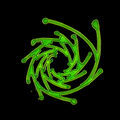Template:Selected anniversaries/October 4: Difference between revisions
No edit summary |
No edit summary |
||
| Line 48: | Line 48: | ||
||1926: Kazuhiko Nishijima born ... physicist who made significant contributions to particle physics. Pic. | ||1926: Kazuhiko Nishijima born ... physicist who made significant contributions to particle physics. Pic. | ||
File:Harald Cramér.jpg|link=Harald Cramér (nonfiction)|1946: Mathematician, statistician, and [[Gnomon algorithm]] theorist [[Harald Cramér (nonfiction)|Harald Cramér]] visits the [[Nested Radical]] coffeehouse in New Minneapolis, Canada, where he gives an impromptu lecture on the mathematical definition of probability, "from which its fundamental properties and the classical theorems are deduced by purely mathematical operations." | |||
File:Max Planck 1878.gif|link=Max Planck (nonfiction)|1947: Physicist and academic [[Max Planck (nonfiction)|Max Planck]] dies. He made many contributions to theoretical physics, and earned fame as the originator of quantum theory. | File:Max Planck 1878.gif|link=Max Planck (nonfiction)|1947: Physicist and academic [[Max Planck (nonfiction)|Max Planck]] dies. He made many contributions to theoretical physics, and earned fame as the originator of quantum theory. | ||
Revision as of 09:43, 6 May 2019
1903: Physicist, inventor, and academic John Vincent Atanasoff born. He will invent the Atanasoff–Berry computer, the first electronic digital computer.
1946: Mathematician, statistician, and Gnomon algorithm theorist Harald Cramér visits the Nested Radical coffeehouse in New Minneapolis, Canada, where he gives an impromptu lecture on the mathematical definition of probability, "from which its fundamental properties and the classical theorems are deduced by purely mathematical operations."
1947: Physicist and academic Max Planck dies. He made many contributions to theoretical physics, and earned fame as the originator of quantum theory.
1957: Clock Head 2 stops math criminals from interfering with the launch of Sputnik 1.
1957: Space Race: Launch of Sputnik 1, the first artificial satellite to orbit the Earth.
2006: Steganographic analysis of the Superimposed Fraunhofer stamp reveals "seven hundred to eight hundred kilobytes" of previously unknown Gnomon algorithm functions related to color. These functions will quickly find application in the detection and prevention of crimes against light.
2018: Green Spiral 5 voted Picture of the Day by the citizens of New Minneapolis, Canada.






